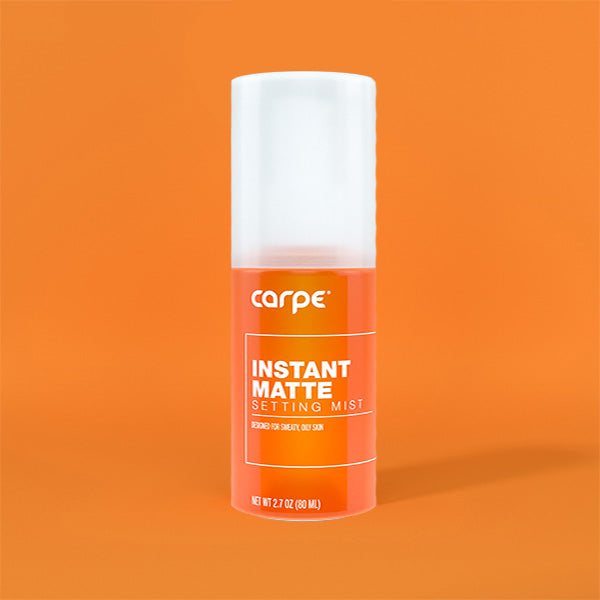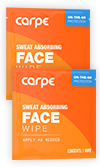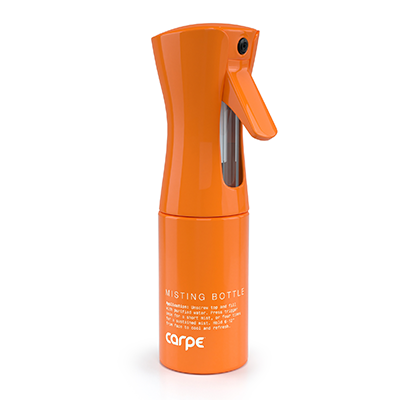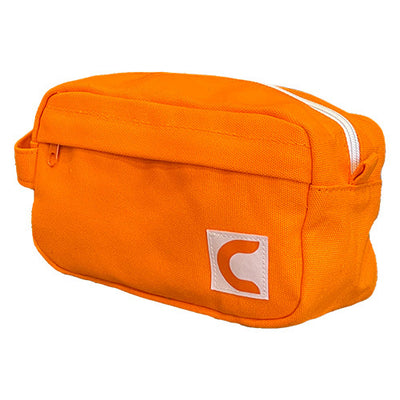Children need special consideration when it comes to medical care and this can complicate treatment for children who develop hyperhidrosis. It is estimated that hyperhidrosis effects .6% of prepubescent children and 1.6% of adolescents, and while this is a smaller portion of the population than adults who are affected, it is still a significant group.[1] If a child has symptoms of excessive sweating, or is already diagnosed, it is important to manage their hyperhidrosis with a doctor. There are several ways to help kids with hyperhidrosis at home, but in cases where sweating is severe or distressing there are several medical treatment options that are safe for children. In most cases, a child diagnosed with excessive sweating is suffering from primary focal hyperhidrosis, so most of the treatment options discussed below are related to relieving symptoms for that type of hyperhidrosis. However, there are some systemic interventions available for the few children experiencing secondary generalized hyperhidrosis.
Topical Treatments
Topical over-the-counter creams for hyperhidrosis are often a first line treatment for both children and adults. However, there has been limited success in use for children. Aluminum salts are used in most topical creams, both over-the-counter and prescription, and it is thought that they block the sweat gland pores and therefore reduce sweating. It has been successful in reducing sweat in children, but it often needs to be applied multiple times a day making it a burdensome option for younger children who cannot apply it themselves. Another drawback to this treatment is that there have been few studies on the pediatric population using these creams. Antiperspirants are safe for adults and no studies have shown that they cause negative health outcomes, but more research needs to be done before they can be declared safe for children. It is a popular treatment option and many doctors choose to manage hyperhidrosis with topical creams as an initial treatment option for children. It can be difficult for some parents to choose the right over-the-counter antiperspirant, so it is a good idea for parents to get a recommendation from their child's doctor. If a topical cream is not enough then there are other medical measures that can be taken to improve a child’s outcome.[1] Recently, a new medication called Qbrexza was released by a company called Dermira, it is a medicated wipe that children as young as nine are able to use. It requires a prescription from a doctor.
Baby powder may also be helpful for sweating issues that children with hyperhidrosis may have. It can be applied to areas that sweat frequently and can absorb moisture and prevent chafing. Other options, like foot powder which is also used to soak up sweat, may or may not be appropriate for children. It is best to speak to your pediatrician before using any new over-the-counter products on your child.
Anticholinergics
Anticholinergics are the main type of oral medications used to treat hyperhidrosis. Doctors most often prescribe glycopyrrolate or oxybutynin for people with hyperhidrosis, although there are other types of anticholinergics that are sometimes prescribed. They bind to receptors that accept the neurotransmitter acetylcholine and reduce sweat by disrupting communication to eccrine cells. These medications have been used commonly in the pediatric population and have had good results. One study with 31 pediatric patients found that 90% of them had a positive response to the medication.[1] There have been a handful of other studies also showing positive results. Another study found that 95% of children using Oxybutynin had an improvement in their quality of life.[2] Unfortunately, the medication does commonly produce side effects like dry mouth, blurred vision, tachycardia and constipation among others.[1] Medication can be a powerful tool to help a suffering child but should be used with caution in younger patients.
Other Potential Medications
Medications such as Calcium-channel blockers, clonidine, a-adrenoceptor antagonists and benzodiazepines have been used to treat children with some positive outcomes. However, there has been less research on these medications and their effectiveness in treating pediatric hyperhidrosis. Benzodiazepines, which can be used when anxiety from hyperhidrosis is pervasive, should be used only after careful consideration due to their potential side effects.[1]
Iontophoresis
Iontophoresis is a treatment used to treat palmar and plantar hyperhidrosis. It works by using an electric current to pass ions into a patient's skin. Typically, the hands or feet are placed in trays containing water and medication and an electric current is turned on so that the ionized medication can enter the skin. It can be done at a doctor’s office or at home. It is not painful and does not have many side effects. However, it has to be done frequently for the treatment to be effective which can be inconvenient, especially for children. There haven’t been specific studies on the pediatric population but children age 8 and up have been included in some studies on the efficacy of iontophoresis. In one study with participants ages 8 to 32 there was a satisfaction rate of 81.2%.[1] This appears to be a good possible treatment for children who need treatment for sweaty hands or sweaty feet. Iontophoresis is a treatment that really does work in most cases, if parents and children can keep up with the treatment schedule. For children who are not seeing benefits, there are ways to make iontophoresis more effective. Overall, it is a good treatment option for children because it does not expose them to systemic medications and it is not invasive.
Botox Injections
Botox has been used to treat palmar and plantar hyperhidrosis, and the FDA approved botox for axillary hyperhidrosis, in adult patients. Botox is a very effective treatment option. However, it is currently not FDA approved for the treatment of hyperhidrosis in children which often leaves families paying for expensive treatments out of pocket. This adds to the cost of hyperhidrosis treatments, and makes it harder for families to cope. Botox injections work by blocking acetylcholine from entering nerve terminals inside sweat glands which, in turn, reduces sweating. A major drawback is the pain associated with botox injection treatments, especially for children who may find treatment traumatic. Anesthetics are commonly used but these carry their own risk factors. There have not been enough studies to demonstrate whether this is a safe treatment option for pediatric patients. It has been used to treat some adolescents who had severe hyperhidrosis with success but there are some serious possible side effects. These can include the systemic effects of botulinum toxin including muscle weakness, incontinence, blurred vision, various other symptoms and death. This can occur in adults but is riskier for children. It may be an effective treatment for children in the future but more research needs to be done before it can be deemed safe for younger patients, especially smaller children.[1]
Surgical Treatment Options
There are various surgical treatment options available to those with hyperhidrosis including liposuction, VASER ultrasound and endoscopic thoracic sympathectomy. Liposuction is a type of local permanent procedure for axillary hyperhidrosis used to remove sweat glands from the armpit of patients and this creates a reduction in sweat. It has been effective in adult patients but there has been little to no study on the procedure in children at this point. VASER ultrasound is a minimally invasive surgical procedure that shows promise for the future, but it has not been studied in a pediatric population and is not currently FDA approved for the treatment of hyperhidrosis in adults or children. A surgical treatment for primary focal hyperhidrosis called endoscopic thoracic sympathectomy (ETS) currently shows the most promise for children with severe hyperhidrosis. It is an invasive procedure with likely potential complications but it does have a high success rate in treating axillary and palmar hyperhidrosis. The most common, and distressing, side effect of ETS is called compensatory sweating, in which a patient develops sweating on other parts of the body after the initial problem area is treated. However, it has been suggested that children recover better from this type of procedure than adults and that even if they are affected by compensatory sweating it is generally less severe. There have been studies of ETS on children and it has a very high success rate and does provide permanent relief, especially for palmar sweating.[3] It has a low mortality rate but there is a significant risk of compensatory sweating which can be as bad as the original issue. It is an option to consider if a child is severely impacted by the symptoms of hyperhidrosis but should only be reserved for extreme cases. More studies need to be done on the long-term outcomes of pediatric patients who receive this surgery. Children should not undergo endoscopic lumbar sympathectomy, a procedure used to treat plantar hyperhidrosis, as the potential side effects are serious and lifelong[1]
If a child is suffering from hyperhidrosis then parents should to talk to their doctor and explore the potential medical treatments for their condition. Depending on each child’s individual case a doctor can properly assess their condition and help to build a specific treatment plan for that child. It is always important to weigh the benefits and risks of a medical procedure before deciding to proceed.
Sources
- Pariser, D. M. (2014). Hyperhidrosis (4th ed., Vol. 32). Philadelphia, PA: Elsevier.
- Chang, M. W. (2015). I Wanna Hold Your Hand: Oxybutynin for Palmar/Plantar Hyperhidrosis in Children. NEJM Journal Watch. Dermatology. doi::10.1056/nejm-jw.NA36907
- Shalaby, M. S., El-Shafee •, E., Safoury, H., & Hay, S. A. (2012). Thoracoscopic excision of the sympathetic chain: An easy and effective treatment for hyperhidrosis in children. Pediatr Surg Int,28, 245-248. doi:10.1007/s00383-011-2984-3






16790753702383.jpg?v=1679075372)

16790746985853.jpg?v=1679074700)


16790757289763.jpg?v=1679075731)









